 Chris Korte's New Zealand Genealogy Project
Chris Korte's New Zealand Genealogy Project
Great Ellingham, Norfolk, England
About page
This page has information about the parish and village of Great Ellingham in Norfolk. The parish was the birth place of Ellen Sarah Wright in 1857 and her sister Alice Mary Wright in 1861. Ernest Edwin Rushbrooke lived in Bury Hall, a substantial property on the outskirts of the village, from about 1881 until 1897. He married Ellen Sarah Wright in the village church, and six of their children were born in the village. They migrated to New Zealand in 1897. Members of the Barnard family had leased Burry Hall farm for over a century from at least 1780.
If you can provide additional information, or corrections, please contact (see Info menu).
Great Ellingham
Great Ellingham is in the agricultural heartland of south Norfolk, in the rolling fields between Norwich and Thetford. Attleborough is just a couple of miles off, but otherwise Great Ellingham is the largest village among its neighbours. In this part of Norfolk, it's unusual to find a parish church with a village spread around it as in Great Ellingham. In the 2011 Census of the village (57 ha) there were 856 people in 363 households. Houses were mainly owner occupied (80%). The parish (1,114 ha), including the village, had a population of 1,132 people in 487 households. The main employment was wholesale and retail trade (16%), Education (12%), Health and social work (10%), Construction (9%) and Agriculture (8%).
Heather Etteridge has numerous blog articles about the history of Great Ellingham - Great Ellingham - One Place Study
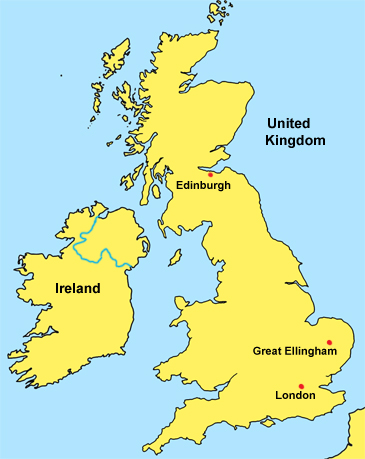
Bury Hall
Bury Hall was one of three Manor Houses in Great Ellingham, and in 1800 the Lord of the Manor of Bury Hall was Thomas de Grey (1748–1818), 2nd Baron Walsingham. At that time Bury Hall and adjacent farm was occupied and leased by James Barnard. Occupiers of Bury Hall are listed below the following image of the Manor House.
Bury Hall (Listed as Bury Farm House) is north of the Great Ellingham village centre and church on the Deopham Road. Earthworks suggest the Hall sits within a moated site of which only the north arm remains. The north-south wing of the present house, consisting of a large first floor hall probably dates from the late 16th century. The attic storey is original. Around 1650 an east-west wing with two rooms on each floor was added. During the 18th century a catslide was added to the west of the older wing and the stairs by the north stack adapted to serve it and the main attic. This was connected with the use of these areas by farm workers and servants. The east-west wing was given a new west wall and stack during the 18th century. During the 19th century more internal partitions were made, the windows replaced and a pentise added to the north wall.
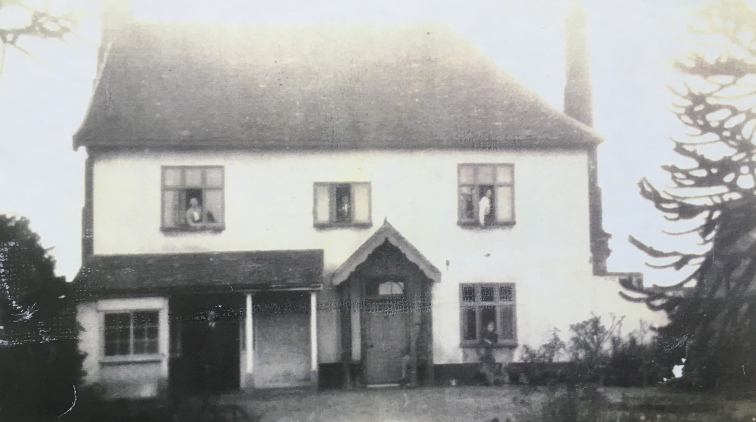
Bury Hall, Great Ellingham
Photo from Great Ellingham - One Place Study blog
The Great Ellingham - One Place Study blog has a number of articles about Bury Hall and its residents.
- 1780 James Barnard - The Norfolk Chronicle of June 3rd, 1780 contained an apology to "Mr James Barnard Jr of Bury-Hall, Great Ellingham". James Barnard leased Bury Hall and the land from Lord Walsingham. See Notes for James Barnard.
- 1871 William Barnard - The 1871 census shows William Barnard as a farmer of 236 acres at Bury Hall employing 10 labourers and 2 boys. 82 year old James Barnard is living with his son.
- 1881 Henry John Ireland - In 1881 H J Ireland, a Norwich Auctioneer, obtained the lease of Bury Hall and farm following William Barnard's financial difficulties and liquidation of his assets. The lease was due to expire in 1885.
- 1885 Ernest Edwin Rushbrooke - Ernest and his brother Alban Rushbrooke farmed Bury Hall farm until Ernest and his family immigrated to New Zealand in 1897.
- 1897 William Downes - In the 1901 and 1911 Census, William Downes and family were living at Bury Hall. In 1917, William Downes purchased Bury Hall farm from the Rt. Hon. Thomas, Baron Lord Walsingham, at a price of £3,000. The transaction was completed on the 10th April, 1917. The following day, William Downes completed a mortgage to secure the sum of £2,000 with the Royal Exchange Assurance Corporation.
- 1932 Frederick James Rivett - On the 5th December 1932, William Downes sold Bury Hall Farm (and the double cottage along the Attleborough Road), to Frederick James Rivett.
19th Century Great Ellingham
The following entry in Kelly's Directory for Cambridgeshire, Norfolk & Suffolk, 1883, describes the parish:
GREAT ELLINGHAM is a village and parish about 3 miles west from Attleborough station, in the Southern division of the county, Shropham hundred, Wayland union, Atlleborough country court district, rural deanery of Rockland, archdeaconry of Norfolk and diocese of Norwich. The church of St. James is a spacious building of flint, with stone dressings, in the Early English style: it has a large chancel, nave with open roof and four arches on either side, aisles, a square tower containing 5 bells, and north porch. The register dates from the year 1653. The living is a vicarage, with the rectory of Little Ellingham annexed, joint yearly value £735, in the gift of R. Berridge esq. and held since 1872 by the Rev. Samuel William Turner B.A. of Oriel College, Oxford, who resides at Little Ellingham. The Baptist chapel was founded here in 1699, and re-erected, of red brick with stone dressings, and opened November, 1824; it will seat about 450 persons. The Primitive Methodists also have a chapel here; there is a fuel allotment of 53 acre producing £72 14s. yearly. Lord Walsingham is lord of the Bury Hall manor, and Mrs. Taylor, of the other two manors. The principal landowners are Lord Walsingham, George Tyrrell Tyrrell esq. Sir W. Bowyer-Smijth bart. Henry Norton esq. and Oldman Carter esq. The soil is various; subsoil, various. The chief crops are wheat, barley and oats. The area is 2,670 acres; rateable value, £4,578 10s.; the population in 1881 was 652.
1841 Census - At the 1841 census the village had over a thousand people, and two pubs, two beer houses, two bakers and a butcher, as well as three blacksmiths, two wheelwrights and a shoemaker.
St James Church
St James Church in Great Ellingham is typical of larger East Anglican churches in that it has a long nave and chancel, aisles and a clerestory. This is essentially a church of the early 14th century, the Decorated period, with a spire of wood and lead. The chequer work created by alternating square blocks of knapped flint square blocks of stone gives a very pleasing appearance to this church.
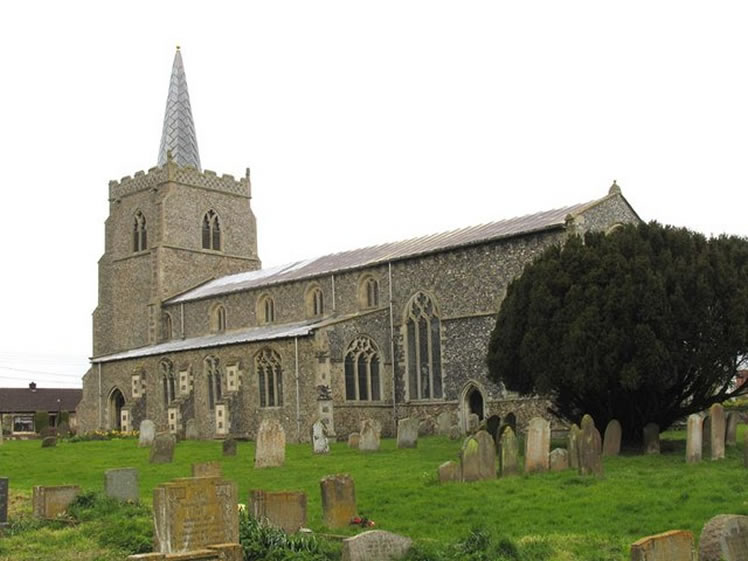
St James, Great Ellingham, Norfolk
cc-by-sa/2.0 - © John Salmon - geograph.org.uk/p/315384
Additional Images of Bury Hall
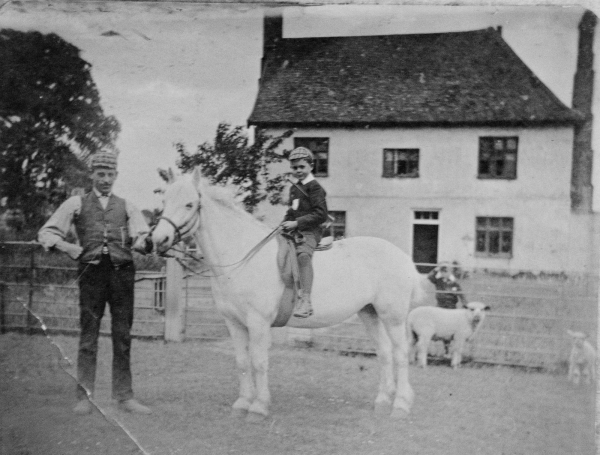
Bury Hall, Great Ellingham, May 1893.
Ernest Edwin RUSHBROOKE and son Alban George RUSHBROOKE on horse.
Photo from Ethel Korte.
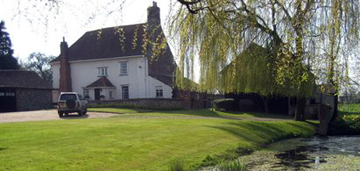
N-S wing Bury Hall, Great Ellingham
Photo by John Leeson
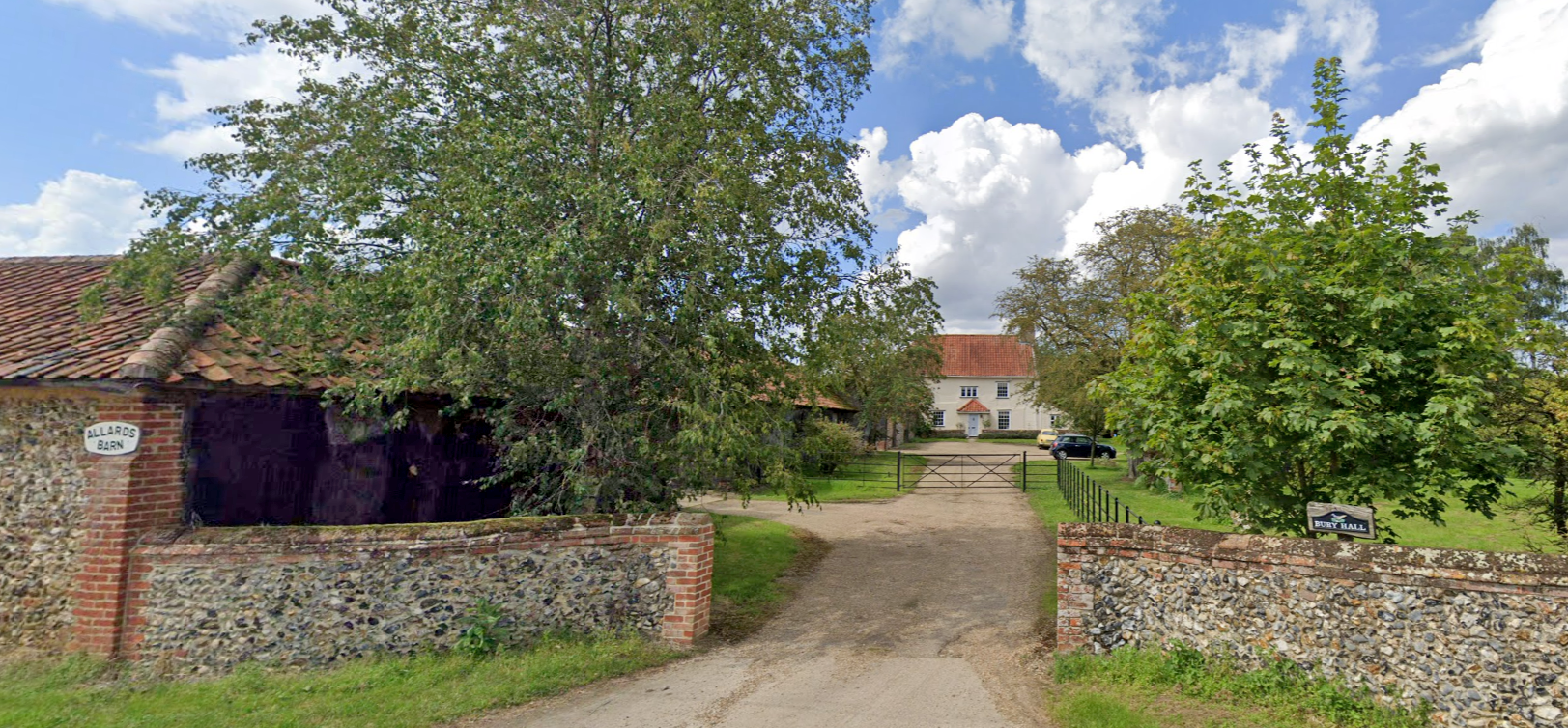
View of Bury Hall from Deopham Road, Great Ellingham, August 2023.
Image from Google Street View.
Page last updated on 9 September 2024.







